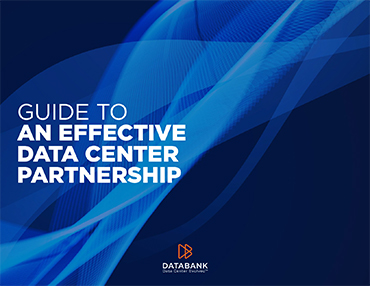Over recent years there has been a strong increase in the use of micro data centers, particularly in urban environments. With that in mind, here is a quick guide to what you need to know about the rise of micro data centers in urban USA.
Understanding micro data centers
Micro data centers are compact, self-contained units designed to provide data processing, storage, and networking capabilities in a smaller footprint compared to traditional data centers. Typically, they consist of integrated racks or enclosures housing servers, storage devices, cooling systems, and power distribution units (PDUs). These units are pre-configured and can be deployed rapidly, either as standalone solutions or as part of a distributed network infrastructure.
How micro data centers compare to traditional data centers
The size difference between micro data centers and traditional data centers leads to several practical differences.
Cost: Micro data centers are more affordable to deploy than traditional data centers. They also have lower running costs.
Ease of deployment: In addition to being much smaller than traditional data centers, micro data centers typically have a modular design. This means they can often be deployed on a “plug-and-play” basis. They are generally easy to expand and/or customize. They also tend to be easy to manage remotely.
Scalability: The fact that micro data centers are low-cost and easy to deploy makes them highly scalable. This makes them highly suitable for modern, agile working practices.
Deployment location: Micro data centers are often deployed close to where data is generated and/or used. This tends to be at the edges of networks, hence their alternative name of edge data centers. By enabling localized processing micro data centers eliminate the need for data to travel to and from a centralized data center. They therefore minimize processing times.
Capability: The size of micro data centers means that they simply cannot have the same power as centralized data centers. This means that they can only be used for relatively simple processing tasks. If businesses want to run complex, resource-intensive applications and services, then they will almost certainly need to use a centralized data center.
Use cases for micro data centers in urban USA
Despite their limitations, there are numerous use cases for micro data centers in urban USA. Here are five of the main ones.
Edge computing for IoT: Micro data centers enable edge computing by bringing computing resources closer to IoT devices in urban environments. This proximity reduces latency and bandwidth usage by processing data locally, enabling real-time analytics, and supporting applications such as smart city infrastructure, traffic management systems, and sensor networks.
Content delivery networks (CDNs): Deploying micro data centers in urban areas enhances the performance and reliability of content delivery networks. By caching and delivering content locally, CDNs reduce latency and improve the user experience for streaming services, e-commerce platforms, and online gaming, while also offloading traffic from centralized data centers.
Mobile edge computing (MEC): Micro data centers support mobile edge computing initiatives by hosting applications and services closer to mobile users. This distributed architecture reduces latency and improves the responsiveness of mobile applications, enabling use cases such as augmented reality (AR), virtual reality (VR), and location-based services in urban environments.
Smart city infrastructure: Micro data centers play a crucial role in powering smart city initiatives by providing the computing infrastructure needed to collect, process, and analyze data from various urban systems and sensors. This data-driven approach enables cities to optimize resource allocation, improve public services, and enhance urban planning and management.
Remote office/branch office (ROBO) deployments: Organizations with distributed operations in urban areas can leverage micro data centers for remote office/branch office (ROBO) deployments. These micro data centers support critical business applications and services at the edge, ensuring consistent performance and data availability for employees and customers across multiple locations.
Challenges of implementing micro data centers in urban USA
While micro data centers in urban USA offer many benefits, they also pose some challenges. Here are three of the main ones.
Regulatory compliance and permitting: Compliance with local regulations and obtaining necessary permits for micro data center installations can be complex and time-consuming. To address this challenge, organizations should engage with local authorities early in the planning process to understand regulatory requirements and streamline the permitting process. Working with experienced vendors and consultants familiar with local regulations can also help navigate compliance issues.
Security concerns: Urban environments may pose heightened security risks for micro data centers, including physical security threats and cyberattacks. To address security concerns, organizations should implement robust security measures such as access controls, surveillance systems, and encryption protocols to protect data and infrastructure. Deploying threat detection and monitoring systems can help detect and respond to security incidents in real time, ensuring the integrity and confidentiality of sensitive information.
Connectivity issues: Ensuring reliable connectivity is essential for micro data center deployments in urban areas, where network congestion and reliability issues can arise. To address this challenge, organizations can implement redundant connectivity options such as multiple internet service providers (ISPs) and diverse network paths. Deploying edge caching and content delivery solutions can also optimize bandwidth usage and improve performance for local users.







